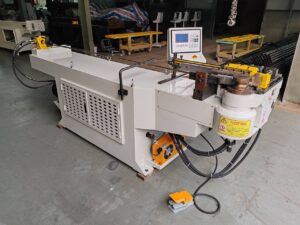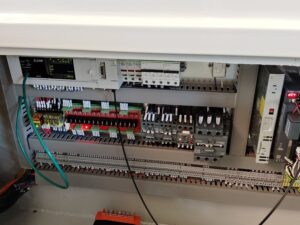Addressing Common Issues with Pipe Tube Benders
Pipe tube benderis essential tools in many industrial applications.allowing for the precise shaping and forming of metal pipes and tubes.
Subtitle 1: Inaccurate Bending Angles
One of the primary problems that can arise with pipe tube benders is inaccurate bending angles. This issue can stem from several factors:
Worn or damaged dies:
Over time, the dies used in the bending process can become worn or damaged, leading to inconsistencies in the bending angle.
Improper setup:
If the pipe tube bender is not properly set up or calibrated, it can result in inaccurate bending angles.
Material variations:
Differences in the hardness, thickness, or composition of the pipe or tube material can affect the bending process.
Subtitle 2: Material Deformation and Wrinkling
Another common issue with pipe tube benders is material deformation and wrinkling. This can occur when:
Inadequate support: If the pipe or tube is not adequately supported during the bending process, it can lead to deformation or wrinkling.
Excessive bending force: Applying too much force during the bending process can cause the material to deform or wrinkle. Adjusting the machine settings and using the appropriate amount of force for the material can help mitigate this problem.
Incorrect mandrel selection: Using the wrong size or type of mandrel can result in material deformation or wrinkling. Selecting the appropriate mandrel for the specific pipe or tube size and material is essential for achieving optimal results.

Subtitle 3: Tooling Wear and Damage
Pipe tube benders rely on various tools and components, such as dies, clamps, and mandrels, to shape and form the material. These tools can experience wear and damage over time, leading to several issues:
Reduced bending accuracy:
As tools wear down, they can cause inconsistencies in the bending process, resulting in inaccurate angles and dimensions.
Increased material damage:
Worn or damaged tools can cause scratches, dents, or other forms of damage to the pipe or tube material during the bending process.
Shortened tool life:
Neglecting to properly maintain or replace worn tools can lead to premature failure, reducing the overall lifespan of the pipe tube bender.
Subtitle 4: Lubrication and Cooling Issues
Proper lubrication and cooling are essential for the smooth operation of pipe tube benders. Problems in these areas can lead to:
Increased friction and wear:
Insufficient lubrication can cause increased friction between the tools and the material, leading to accelerated wear and reduced bending accuracy.
Overheating:
Inadequate cooling can cause the pipe tube bender and its components to overheat, leading to reduced performance and potential damage.
Material distortion:
Excessive heat generated during the bending process can cause the pipe or tube material to distort or develop undesirable properties.
Subtitle 5: Operator Error and Training
Finally, operator error and inadequate training can contribute to problems with pipe tube benders. Some common issues include:
Incorrect machine setup:
Operators who are not properly trained in setting up and adjusting the pipe tube bender may make errors that lead to inaccurate bending or material damage.
Improper material handling:
Mishandling the pipe or tube material during the bending process can result in damage, deformation, or inaccurate bending.
Neglecting safety protocols:
Pipe tube benders can pose safety risks if not operated correctly. Operators who fail to follow safety protocols, such as wearing appropriate personal protective equipment (PPE) or properly securing the m




